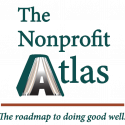Exploring The Psychology Of Charitable Giving: Three Mental Barriers That Hold Donors Back

The field of philanthropy is undergoing a transformation driven by the largest wealth transfer in history, with an estimated $84.4 trillion projected to pass from one generation to the next by 2045. Of this, $11.9 trillion is expected to go to charitable causes. This shift promises to reshape the landscape of giving, especially as the next generation of donors emerges. They will come from more diverse backgrounds, and we can expect more women to lead philanthropic efforts within families.
However, these next-generation philanthropists will still face many of the same challenges that their predecessors encountered. Psychological barriers, such as decision paralysis, imposter syndrome, and lack of time, often hinder effective philanthropy and reduce the joy derived from giving. To maximize impact and reduce stress, it’s essential to address these barriers early on.
Barrier #1: Too Many Choices
The abundance of philanthropic options—charitable causes, grantmaking vehicles, and organizations—can lead to decision paralysis. The pressure to choose the right cause or method can overwhelm donors, especially newcomers who are uncertain about the best approach. Streamlining processes and setting priorities can help donors make more confident decisions.
Barrier #2: Feeling Unprepared to Make Decisions
Many donors, particularly new ones and women, may experience imposter syndrome, doubting their ability to make sound philanthropic decisions. This often stems from the belief that they must gather more information or receive validation before acting. However, over-consulting or seeking too much technical knowledge can create confusion and hesitation. Reframing risk and success, and starting with small grants, can help build confidence over time.
Barrier #3: Lack of Time
Balancing personal and professional obligations can leave donors feeling they lack time for philanthropy. This can be especially true for women, who often juggle multiple roles, and for next-generation donors, who may be navigating careers and family responsibilities. To combat this, simplifying workflows, setting realistic deadlines, and breaking tasks into manageable steps can make philanthropy feel more achievable.
Addressing These Barriers:
- Set priorities and simplify processes: Streamlining tasks and establishing clear priorities can reduce the overwhelming feeling of responsibility. Break down the giving process into smaller, manageable actions.
- Reframe perspectives on success and risk: Adjusting how success is defined and embracing risk as part of the learning process can alleviate anxiety. Experimenting with small grants is a practical way to gain confidence.
- Seek a blended team of advisors: Working with a team of advisors, including financial and philanthropic experts, can reduce stress and help make well-informed decisions with greater confidence.
In conclusion, by recognizing these psychological barriers and taking proactive steps, donors can navigate the complexities of philanthropy with greater ease and satisfaction. Simplifying processes, adjusting expectations, and seeking expert support can lead to more impactful, joyful giving as the next wave of philanthropists steps into leadership roles.
Source: Wealth Management
The Nonprofit Atlas connects the dots for any “do-gooders” to do the most good. We provide the roadmap to doing good well. We simplify the work of securing resources, relationships, and best practices that fuel a mission and realize a vision. See us in action with a FREE 30-minute consultation.
